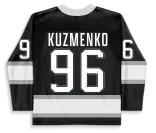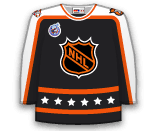
NHL Hockey Player News


Montour missed the first 16 games of the regular season after undergoing offseason shoulder surgery. Montour will look to pick up where he left off last season, where he had career-highs in goals (16), assists (57), points (73), SOG (242), and Power-play points (33). It unclear where Montour will line-up in his first game back, but he should re-claim his spot on the top power-play unit.

Sabres head coach Don Granato said after Tuesday's game against the Bruins that Thompson would likely miss "significant time" due to the upper-body injury. Thompson originally left the game in the first period due to a lower-body injury before returning. He then exited the game again shortly thereafter when a Charlie McAvoy shot struck him in the left wrist. Thompson's absence will leave a major void in the Sabres' attack, even despite his relatively slow start. Thompson has six goals and six assists in 15 games on the season. We should expect to receive a more definitive timeline on his recovery in the coming days.

Walman left Friday's Global Series game in Sweden after crashing into the post in the second period and will not return. The 27-year-old's absence will be a massive loss if he is forced to miss any time as he has four goals, seven points, 31 SOG, 18 PIMs and a +5 plus/minus in 16 games this season while manning the Red Wings' top defensive pair for 21:01 TOI/GP.

If Montour can play on Friday, he will be about one week ahead of the initial recovery schedule that targeted him for an American Thanksgiving return date. Montour has yet to play this season but will look to build on an incredible breakout campaign in 2022-23. Last season, Montour scored an impressive 73 points (16G / 57A) in 80 games after only scoring 73 points (23G / 50A) in his 185 combined games prior.

Ekblad, initially expected to be out until mid-December, could return to action as soon as tonight against the Anaheim Ducks. The injured reserve has become far too familiar of a place for Ekblad over the past few seasons as the talented defenceman will hope for a better fate upon his return for the remainder of the season. Despite his recent inability to play an entire season, Ekblad scored more than 10 goals in each of his past three campaigns.

Dubois left the game after colliding awkwardly with the post in Thursday's game against the Panthers and will be a game-time decision on Saturday against the St. Louis Blues. He has eight points (4G / 4A) in 15 games this season, playing most recently on the third line with Jaret Anderson-Dolan and Arthur Kaliyev.

Mahura left the Panthers' game Thursday vs. Los Angeles after just six shifts and 5:04 TOI due to a lower-body and has been placed on the inured reserve Friday. The 25-year-old stay-at-home defensemen is in his second full season with the cats and has five assists, 15 SOG, eight PIMs and a -2 plus/minus through 16 games prior to his injury.

Harley left the Stars game on Sunday against the Minnesota Wild, playing only 11:19, when he was boarded by Brandon Duhaime. Duhaime received a major penalty and was ejected from the game. Joel Hanley replaced Harley in the Stars lineup on Tuesday and is expected to do so again on Saturday. In his first season as a full-time NHLer, Harley has five points (3G / 2A) in 14 games.

Hall has missed the Blackhawks' previous two games due to a lower-body injury and will take warmups and be a game-time decision Saturday vs. Nashville. The 32-year-old is in his first season in Chicago after an offseason trade from Boston, and has two goals, two assists, 15 SOG, four PIMs and a -2 plus/minus through eight injury riddled games so far in 2023-24.

Kuzmenko exited the game in the third period in obvious discomfort on Wednesday after taking a puck to the face against the New York Islanders and did not play Thursday vs. Calgary. The second-year NHLer has picked up where he left off the 2022-23 campaign, being consistent all season, potting 14 points (3G / 11A) in 16 games.

Staal last played on October 19th when he exited the game, playing only 7:24, with an upper-body injury. The veteran defenceman is expected to skate on the Flyers' third defensive pair with Louis Belpedio.

Rookie Zach Benson has not played since October 29th but will be a welcome addition to a Sabres lineup that will be without Tage Thompson (upper-body) for the foreseeable future. Through six games this season, Benson has two points (0G / 2A), averaging 13:17 time-on-ice, and will likely see increased offensive deployment as the Sabres search for additional scoring depth.

The Coyotes have recalled Jan Jenik from Tuscon (AHL) as a forward replacement for Hayton, who will miss 4-6 weeks. Hayton scored a goal for the Coyotes despite exiting the game with an upper-body injury after playing only 7:57 time-on-ice. The Coyotes finished the game down two forwards as Matias Maccelli also exited the game but was more fortunate than Hayton with his post-game prognosis, as he is not expected to miss much (if any) time. Hayton had four points (2G / 2A) in his last five games after being held without a single point in his first 11.

Maccelli exited Thursday's game with an upper-body injury after playing only 6:04 time-on-ice but seems to have avoided a serious injury. The talented Finnish winger has been having a solid season with the Coyotes, totalling 11 points (2G / 9A) in 16 games while primarily playing Nick Bjugstad and Lawson Crouse on the Coyotes' second line.

In Brown's four games before his injury, he was averaging 2.25 shots per game, a vast improvement over the 0.80 he was averaging in the five games prior, and perhaps a sign that he is re-finding his game. Brown, who has yet to record a point through nine games this season, skated at practice alongside Connor McDavid and Ryan Nugent-Hopkins at practice on Friday.

Hughes last played on November 3rd when he fell awkwardly into the boards but appears ready to return to action on Saturday after being a full participant at practice on Friday. This would mark approximately two weeks since Hughes last played, the low end of his initial two-to-four-week timeline. Before his injury, Hughes led the league with 20 points (5G / 15A) in 10 games and is expected to retake his place on the Devils' top line and top powerplay unit.

Mantha is expected to return to the lineup after last playing on November 8th, when he scored two goals, playing 12:58 against the Florida Panthers. In 10 games this season, Mantha has been held without a point in eight, totalling four points (2G / 2A). In addition to his lack of production, Mantha is averaging only 12:43 time-on-ice per game, nearly two minutes less than last season, his lowest total since his rookie campaign with the Detroit Red Wings in 2015-16.

Van Riemsdyk has been out of the lineup since November 4th with a lower-body injury. He has one point (0G / 1A) in 10 games, averaging 17:35 time-on-ice, primarily skating alongside Rasmus Sandin before his injury.

NHL Injury Report
Reading the NHL Injury Report
Common NHL Injuries
Upper Body Injuries
Lower Body Injuries
Reserve Lists
Injured Reserve List
Long Term Injured Reserve List
Considering Injuries When Placing NHL Bets
Moneyline and Puck Line Bets
Goal Total Bets
Prop Bets
Futures Odds
NHL Injury Report FAQs
The NHL injury report is updated daily so that you can see the latest injury news ahead of puck drop in any of today’s matchups. Seeing timely updates to the NHL injury report can make a major impact on your daily fantasy sports picks and wagers on a particular game. All information provided on the NHL injury report is provided directly by the NHL and each respective franchise to ensure accuracy.
While the minimum amount of time spent on the injured reserve list is seven calendar days, there is no maximum amount of time that a player can be placed on the injured reserve list. If a player is set to be sidelined for longer than 24 calendar days or 10 NHL games, then a club may opt to place them on the long-term injured reserve instead. This allows franchises with the ability to exceed the salary cap while a player is placed on this reserve list.
No injury recovery timeline is the same as another as there are several factors that go into the rehab process for a player being affected by injury. Factors include but are not limited to, injury severity, player injury/medical history, age, as well as the location of the injury. Some injuries are able to clear up in a matter of days, while others may take an athlete out of action for the entirety of a season.